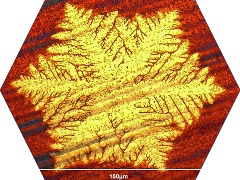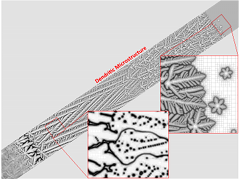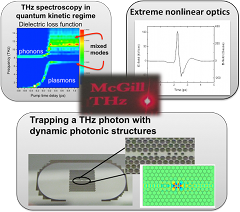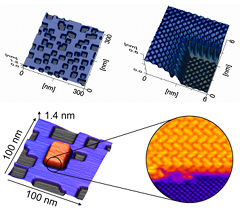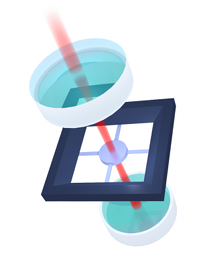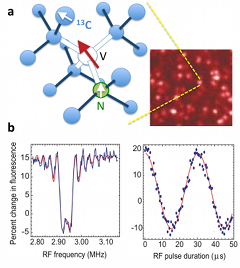|
Condensed Matter PhysicsNew discoveries are constantly made in condensed matter systems, be it in the form of new materials, such as graphene or magnetic superconductors, new quantum phases, such as strongly correlated systems or topological phases, new frontiers such as Terahertz or nanoscience, new paradigms, such a quantum computing or the mechanics of light. This is an exciting time for McGill's condensed matter group, since its research groups are actively involved in these breakthroughs, providing an excellent opportunity for students to participate in this fascinating research area as detailed below. Novel materialsMaterials play a privileged role in condensed matter physics, since they often lead to new unexpected phenomena, such as unconventional superconductivity, quantum Hall effects, or new topologies. Researchers at McGill are interested in a wide range of materials including, carbon materials, such as diamond, graphene, buckyballs, and carbon nanotubes, topological materials such as topological insulators, superconductors and two dimensional electron gases, magnetic and spintronic materials, as well as biomaterials, including DNA. The focus is on the synthesis, the physical properties and characterization, as well as on the theory and large scale modeling of these novel materials.
New frontiersIn research, pushing the boundaries ever further leads to new worlds opening up, be it at the ultra-short time scales such as those probed by femto-second pulses, or new frequency regimes, such as terahertz spectroscopy, or the fascinating world at the nano-scale, which can be made visible by local probes or with coherent X-rays and electron beams. At McGill these new frontiers are constantly pushed further with many groups active in these areas.
New paradigmsQuantum computing, which could change the way we think about information processing, has the potential to dramatically alter our information and communication technology. This goes further then pure quantum information processing, it also opens new directions in quantum detection schemes, the search for long coherence times in qubits, or also the interplay of light and matter in the quantum limit. McGill is actively involved in these new fascinating directions with extensive collaborations between theory and experiment.
|
